No longer than one year ago, on June 11th 2013, Google, launched a new algorithm whose main purpose was to clean some very “shady” niches, such as “payday loans” or “buy Viagra”. These are very controversial niches that everybody knew about but hardly anybody talked about. One year earlier, in 2012 we tried to fire a warning shot concerning this matter, but Matt Cutt’s answer came out 1 year later, when they released the initial Payday Loans Google Update.
“There were people complaining about searches like Payday Loans […] So we have 2 different changes that try to tackle those kind of queries in a couple different ways. We cannot give you too many details about how they work but I’m kind of excited that we’re going from having general queries be a little more clean to going into some of these areas that traditionally have been a little more spammy, including for example some more pornographic queries […]”
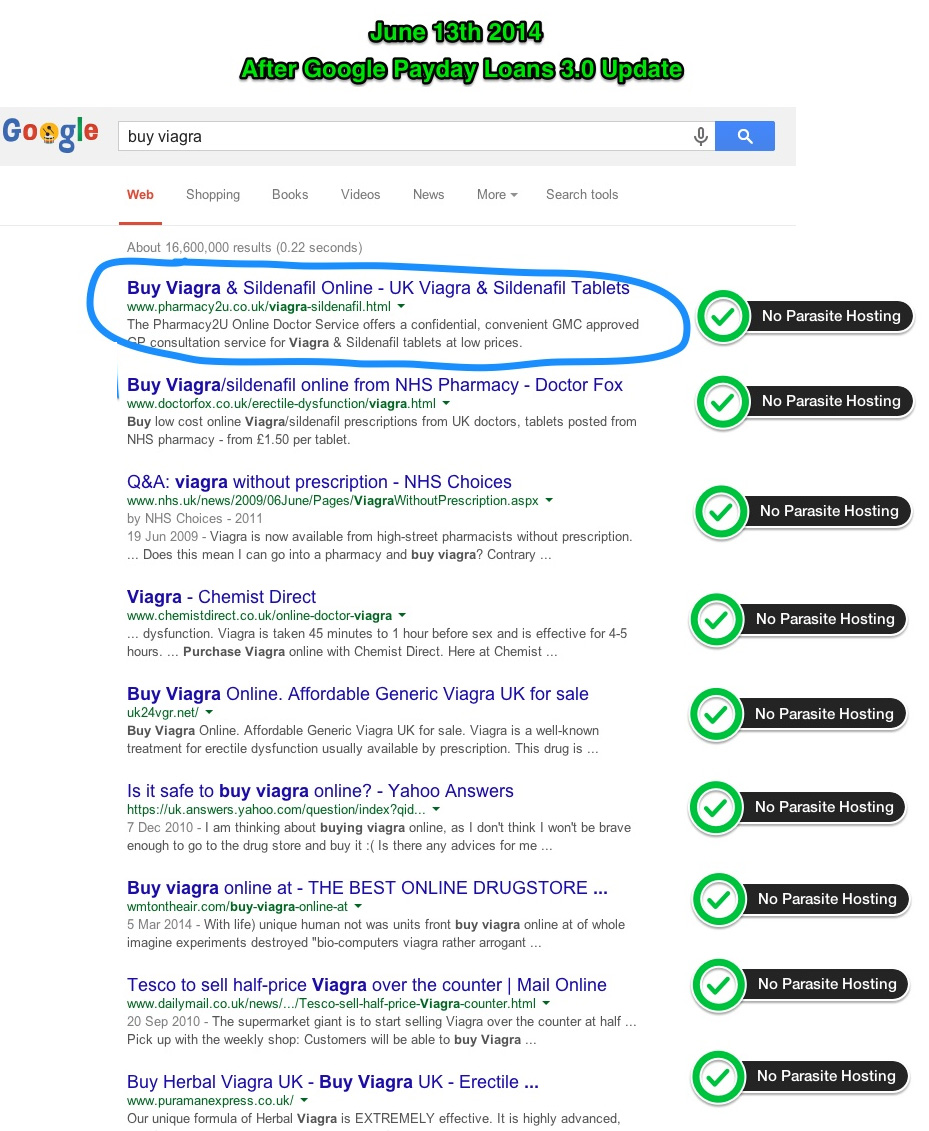
And although Google tried to make things right by targeting some very spammy sites and queries, the overall impact was still moderate. Tactics such as Parasite Hosting, Google Bombing or Cloaking & Redirects were still standing strong. Improvement was needed in this area as spammers will always find new ways of “cheating” the system. Therefore, Payday Loan 2.0, whose explicit purpose was to crack down on very spammy queries and sites, was launched just a few weeks ago. But it was not enough. Spam was still ranking high.
Here we are, 3 weeks forward from the Pay Day Loans 2.0, and Google’s web spam team leader announces a new update of this algorithm Payday Loans 3.0. Before asking whether this algorithm was necessary or not, I think it’s worth lingering a bit on the way the big “announcement” was made. Oh, wait… there hasn’t been a real official announcement. And, don’t get me wrong, I am not expecting an invitation to a launch party with cake and champagne. I am just saying that yesterday, at the SMX Advanced conference Matt Cutts mentioned that a new update to the Pay Day Loans Algorithm is going to be launched in the next few days. Today, the same Matt Cutts answered to a tweet with: “it is rolling out now”.
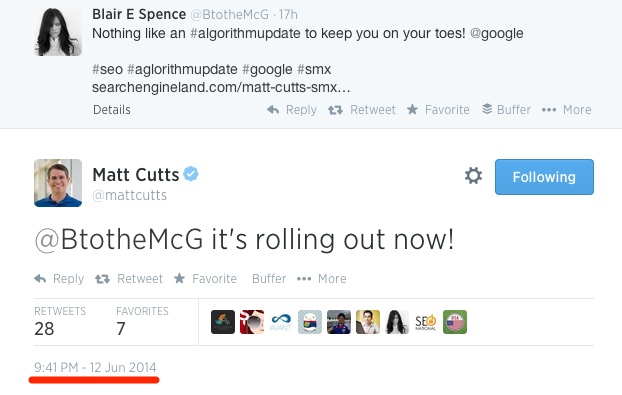
In reality, based on the case studies we are going to present in this article, this update rolled out before the conference, meaning BEFORE Google’s representative mentioned that “is going to be rolled out in the future”. All the same, maybe we will tackle Google’s official announcements policy in some other post as for the moment we have some very interesting case studies we want to share with you.
Super Competitive Shaddy Niches
There is a very productive niche for things that people are ashamed to ask for, but need them anyway, so they will try to look for them (and will usually find them online, along with anything else they might need).
One example of such a niche is the one for male potency pills. Apparently, over 45 tons of Viagra are consumed worldwide every year. And they’re not all coming from drugstores. The name of the blue pill has become synonymous with the male potency drug, so it’s really no wonder that most websites out there that deal with such products use “Viagra” as a keyword. It also makes sense that even websites that have no connection to the drug use it as a keyword, to draw traffic. Of course, Pfizer is not happy about it, and has requested that Google shall not allow advertisers to promote any sites on this keyword.
Another such area of ashamed-but-needed products and services is the Money industry. In particular, money beyond your spending capabilities (read payday loans). While the profits are not necessarily what you would expect, with net profits usually in the 10-12% range for payday lenders, the mirage of easy money still draws quite a large competition. That’s mainly because there’s such a large demographic that can be targeted and so many ways in which you can market yourself. And if you choose to advertise online, the investment is at a minimum.
Of course, the problem with that is that everyone in the field is thinking in the same way. So how do you stand out to the myriad of desperate borrowers? Most likely by adopting shady tactics. In fact, just a couple of years ago payday loan agencies in the UK were under scrutiny for aggressive advertising practices, as they started placing ads on social networking sites . More recently, other more complex schemes surfaced, such as hacking and hijacking unconnected sites for profit. Such was the case of www.bicyclesafe.com, who just two years ago was hijacked to redirect to a payday loan agency’s website, but also to return as the main result when people searched for “payday loans” . And some examples can be found by the hundreds.
Before and After the Google Payday Loans 3.0 Google Update
Judging by the way keywords such as: “Payday loans”, “Buy Viagra”, gambling stuff ant other highly competitive keywords looked like (practically everything that makes tons of money), a Google Spammy Update was definitely imminent. And hopefully this time the update’s severity will be stronger than the spammer’s ingenuity.
Let’s take a look at two comparative screenshots for the “buy viagra” query, one taken two months ago, on April 3rd and one taken today, June 13th.
Let’s analyze the screenshot before the Payday Loan 3.0 update hit. As we can easily see, Google’s first page of results, the one that should offer the most relevant results, generated ONLY ONE “valid” result; only one webpage that isn’t a parasited website or a shady redirect.
Let’s have a closer look on what is happening at the moment, watching the right side of the screenshot above. Quite a change, isn’t it? It’s like we are looking at a whole different story now. Google’s first page of results for the query “buy viagra” is filled with almost relevant and trustworthy results. It looks like Google did the summer cleaning in a very serious and efficient manner.
For a better understanding of the matter, let’s put under the magnifying glass two sites that have been affected by this recent update, one from the “buy viagra” niche and one from the “payday loans” niche. Both analyzed websites are from the UK market, one of the most spammed markets for the mentioned queries.
With so many penalty case studies coming from UK lately, we tend to ask ourselves if Google started a crusade against webmasters coming from the British peninsula. With a market share of around 90%, it’s clear that the big G holds the monopoly in terms of search in UK. That means quite a lot of power for the search engine but also an extra responsibility in generating the most relevant results. With millions of British searchers daily, all companies want to be number one in Google’s golden list. The problem is that not all of them can be number one. So the battle begins. On one side, web sites resort to all kind of tactics to “steal” a corner from Google’s first page, on the other side, Google is continuously creating new and improved algorithms in order to decide why one site should rank in front of another. We can only hope that this algorithm will be able to adequately settle this matter.
Spammy Medical Terms Case Study – Top 1 Ranking Site (for UK)
The website that we submit to the analysis, Pharmacy2U was established in 1999, being one of UK’s first internet pharmacies. Quite a pioneer in the field we might say. Overall, the website looks good, has well written, original and relevant content and (maybe the most important for the moment) it ranks first on the SERPs for the “buy viagra”, “buy cialis” and “buy levitra” queries. The Payday Loans 3.0 Google Update gave it a really nice boost, as before the algorithm change it used to be on the 5th position, two months ago as you can see in the screenshot above.
This is the only site that was in the top 10 SERP 2 months ago and now it’s still there. So it has to have something special.
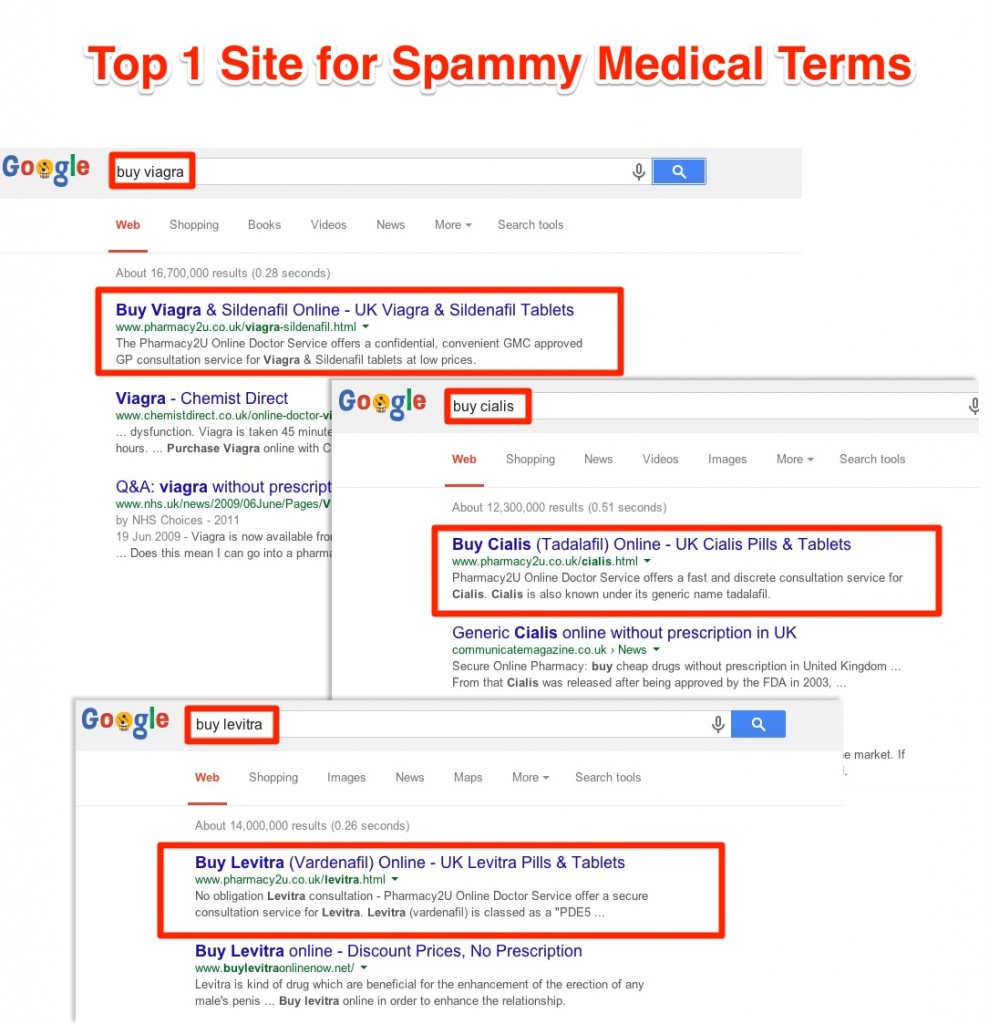
Let’s dig a bit and see what we can find about the site. Checking the link velocity of the site we can easily see that the site existed for quite some time and it’s monthly link velocity is somewhat natural. There were a few spikes in the past but the site’s overall link history looks ok.
Yet we are not dealing only with an “old” site, but also with a site that has a stable ranking in terms of SEO visibility. As it can be seen on the screenshot below, taken from 2 SEO Visibility providers we see that both of them report the approximate same trend.
At first sight we see no dramatic ups and downs, no signs of previous penalties or obvious linking schemes. On the contrary, we observed a healthy link profile that contains a lot of links from Topically Relevant sites pointing back to the analyzed site. This means that sites in the same topical category, “Health”, are linking back to the site.
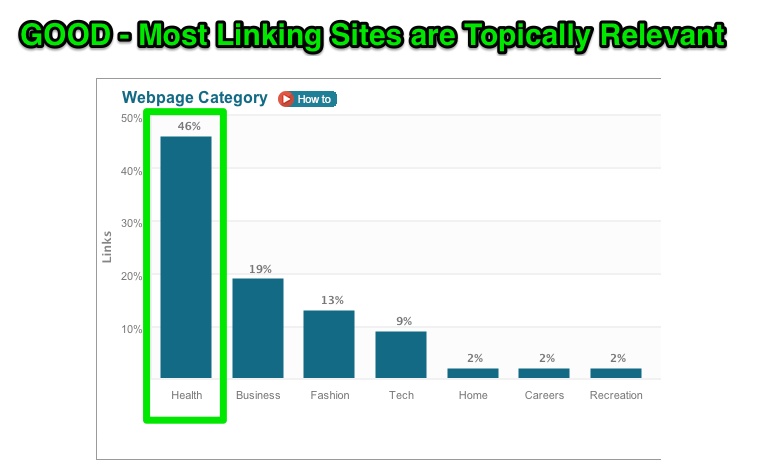
Yet, are these elements enough for Pharmacy2u to rank first for such controversial and highly spammed queries? Let’s do a more in-depth analysis to see what we are really dealing with. We should start with an Unnatural Link Analysis and see how the sites stands up.
At a closer look, we see that the first appearance deceives many and things are not always what they seem. The unnatural – natural link ratio is not quite Google friendly. From our internal research, sites that have over 25% unnatural + suspect links are likely to be already penalized (or will be if they weren’t already). Yet, this is a very competitive niche and the rules might apply differently here.
As we can see in the screenshots, it is not very hard to identify the strategy Pharmacy2U has been using in the pursuit of higher ranks. We are dealing with an alarming number of links coming from Webdirectories, link networks or forums. Google explicitly mentions that these kind of strategies may be considered part of a link scheme and a violation of Google’s Webmaster Guidelines. For all that, the same Google gave Pharmacy2U a helping hand and helped it climb to position no.1. Most unnatural linked pages are directed to the main page, sign that in the past they may have tried some heavy linking campaigns.
Yet, if we take a look at the most common unnatural anchor text, we see that the number 1 on “buy viagra” doesn’t have a commercial anchor text heavy linking strategy. Mostly, they are using brand anchor text and this might be one of the reasons they’ve entered into Google’s good graces. Because of this fact, they probably did not trigger a red flag on the Google screen.
There are lots of forum links, blog links, Webdirectory links and also some blog comments and guest posts.
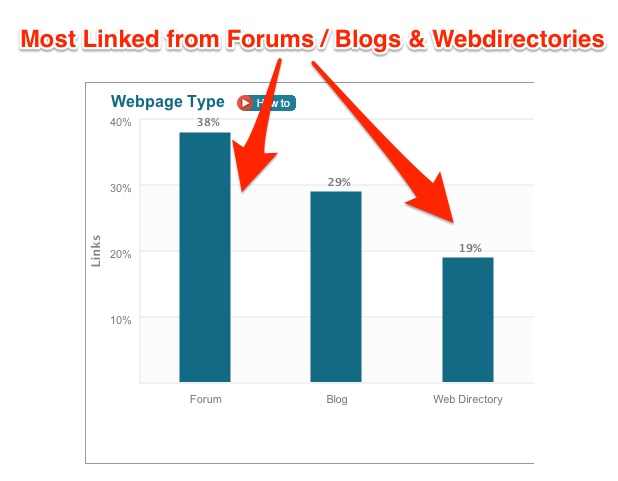
Yet, let’s see some examples of one of their highly used (or abused) strategy, link dropping. Below, there are some screenshots taken from two random Pharmacy2U links, one is a blog comment and the other is an author signature. What do the two of them have in common? They are both sprinkled with overflowing unnatural flavor. It’s true that this strategy may be just a thing of the past and the blog comments and guest posting might not be in a huge number but still, it’s hard to believe that the omniscient Google might have missed this issue.
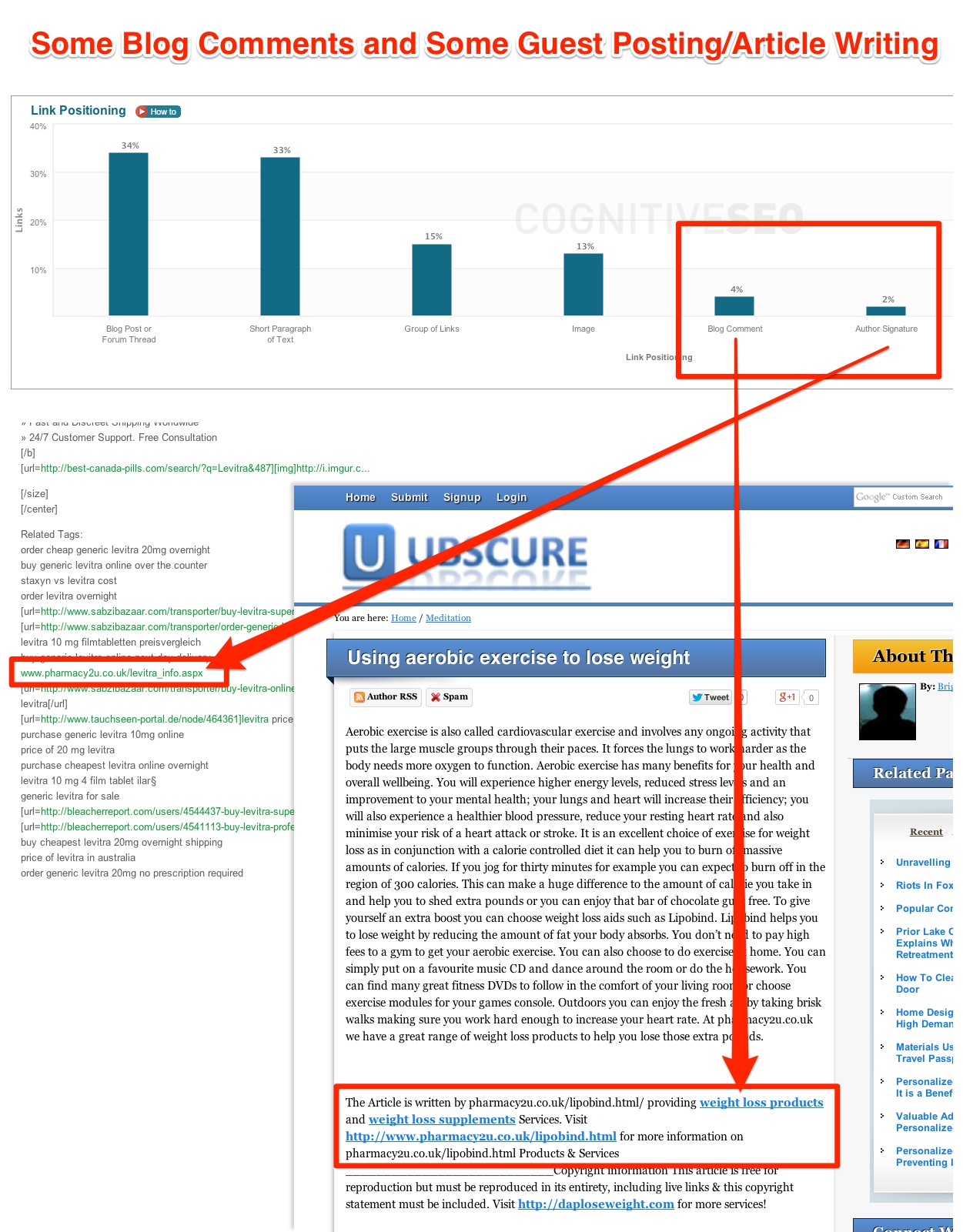
So, how can a site with such a “going-to-be-penalized” profile can possibly rank at no.1? We are doing reverse engineering here so we cannot certainly put our finger on anything, but we assume that this may have happened for two reasons:
-
First, Google might be applying the “of all the evils we choose the least bad” principle. Meaning that this particular niche is a highly spammed one and you can hardly find any site that would closely respect the guidelines. As we mentioned in the beginning of the article, https://www.pharmacy2u.co.uk/ was the only site from Google’s first page results that wasn’t a parasite host or a redirect, 2 months ago. Not much to choose from. In this case, the big G may have chosen to boost not the site with a flawless profile (as it didn’t find any), but the one which is somewhat close to its guidelines.
-
Second, this niche is a special one from so many points of view and therefore Google might not have detected this website as having an unnatural link profile, although in other niches, similar ratios of unnatural links would penalize a site.
-
Third, this site might be affected by a negative SEO attack. It is possible but not that probable.
Payday Loans Case Study – Top 1 Ranking Site (for UK)
Let’s shift gears a little and let’s go to the Payday loans territory. Albeit “Payday Loans” is a highly used and abused area, we will look into a website that ranks first for the “payday loan” query, a well deserved position. We put under review Wizzcash , a relatively new site that provides short-term loans of up to £1,000. Is not a very large amount you may say so why all this fuzz in this niche? A lot of controversy arose in the payday loans niche as lenders are usually targeting the most vulnerable borrowers and are not doing proper affordability checks on them before granting loans. Also, costs are not always transparent and some lenders seem to encourage consumers to take on more borrowing.
But let’s go back to our analysis and let’s take a peek on what’s going on in the “payday loans niche”
Exploring this site we see that it doesn’t have a super long link velocity (2 years) so seniority in the field might not be its forte. It’s not new but it is not old from an SEO point of view. Still being such a competitive niche, usually sites with many more referring domains were battling for the 1st position in the SERPs.
Looking at the SEO visibility for this site it shows that it has a quick increase in ranks and then began to decline until it was stabilized. It was probably not affected by penalties.
Looking at the Unnatural Link Distribution, we can see that they have a super clean link profile ( just some suspect links and an overwhelming majority of natural links). The Brand versus Commercial Anchor Text distribution is great. Taking into account so many sites that we’ve analyzed in our “internal cuisine”, we must tell you that we’ve rarely seen a site with such a clean profile (97% ok links – 3% suspect links). And being a website from such a controversial niche make things even more impressive. Seems like Wizzcash.com read closely the steps to a Google-friendly site , being quite a role model for many sites from this disputed area.
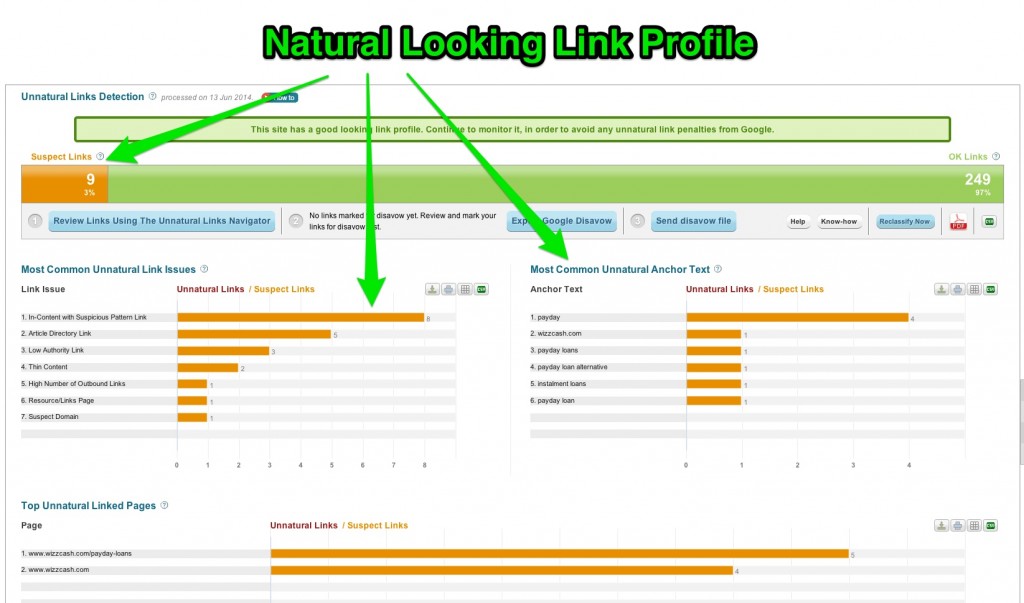
Yet, for such a competitive niche, Wizzcash has just a few links coming from only 210 referring domains. So, how can a website with such few links rank first on Google’s Golden Page where everyone struggles hard to be on? All in all, we are dealing with a website that contradicts the stereotypes from this area and proves that managing a website with a good-looking link profile is “doable” in the “payday loan” niche.
Conclusion
Taking two steps back and watching the overall situation, we might say that the PayDay Loan 3.0 Google Update did a really good job compared to the Payday Loans 1.0 & 2.0 Updates. The latest update seems to have cleaned up all the parasite hosting sites from the SERPs and Google seems to provide now what it always intended. Of course, there are still issues in terms of unnatural links (as you could see from the site ranking for pharmaceutical terms) but it is much better than it used to be.
At the end of the day, Google successfully made the transition from the invasion of parasite hosting and shady redirects to relevant and accurate results on the topic. It seems to me that Google might have a specific list of keywords that are put under “special treatment” and they raise the bar for “spammy” sites detection in these particular areas.

 Site Explorer
Site Explorer Keyword tool
Keyword tool Google Algorithm Changes
Google Algorithm Changes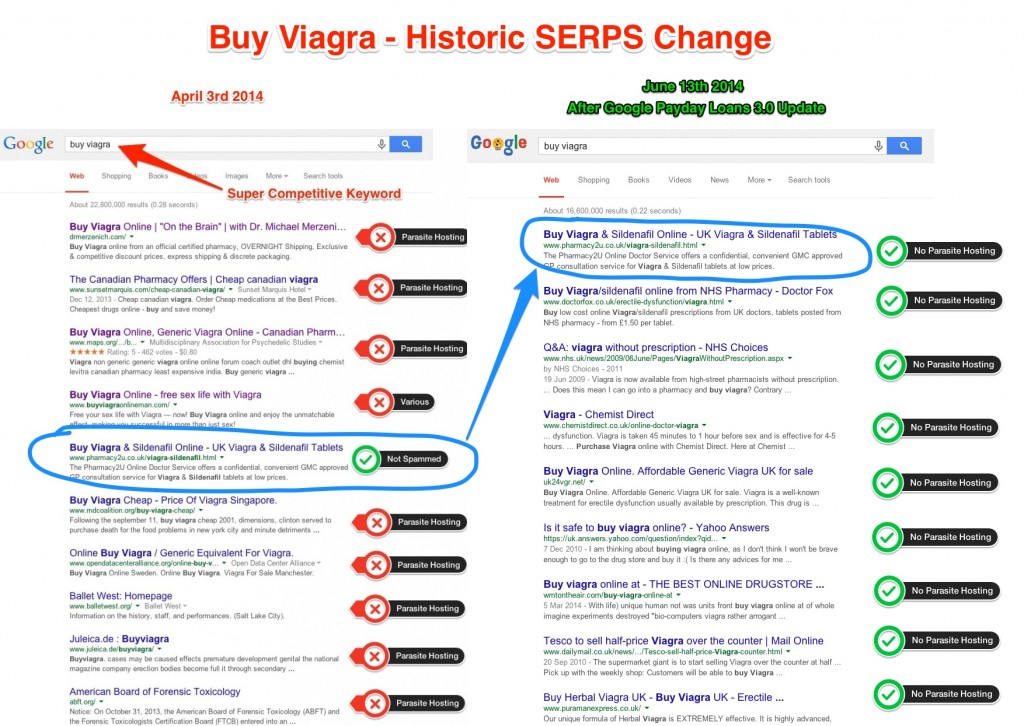
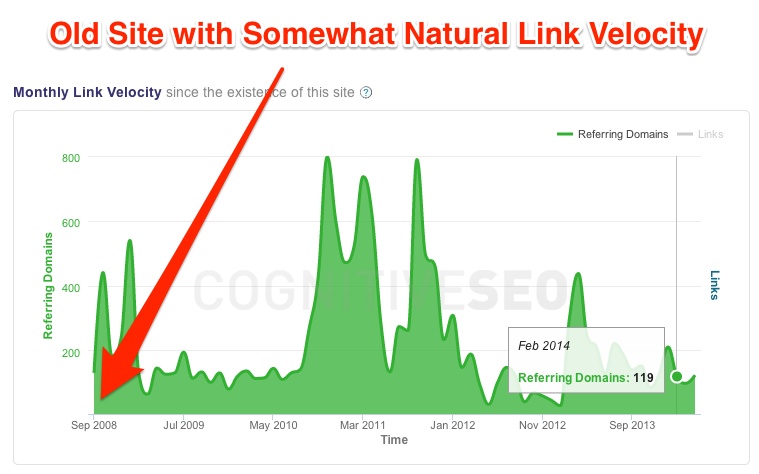
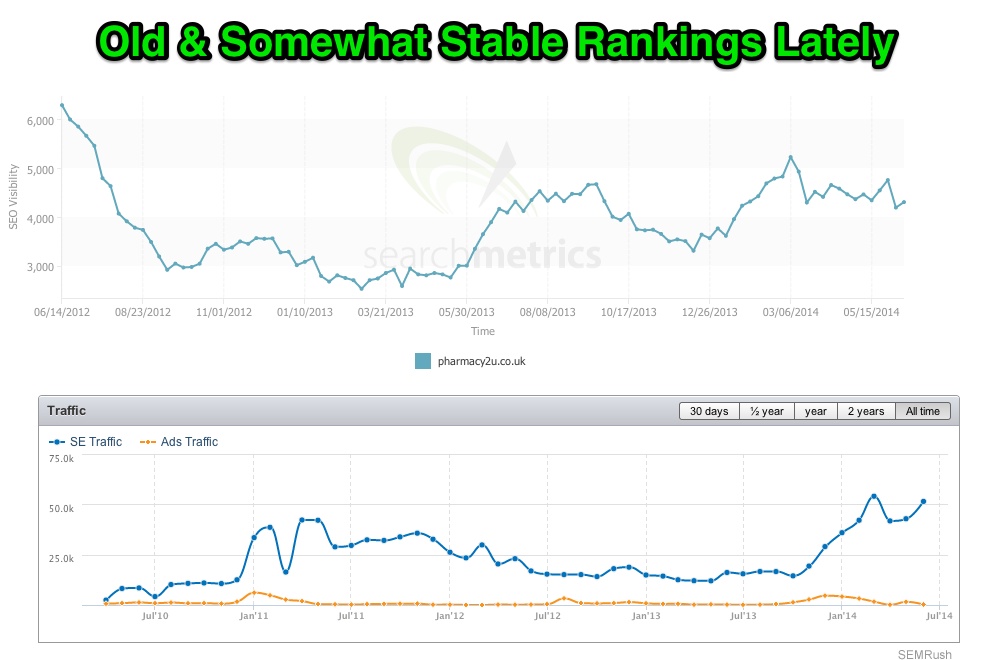
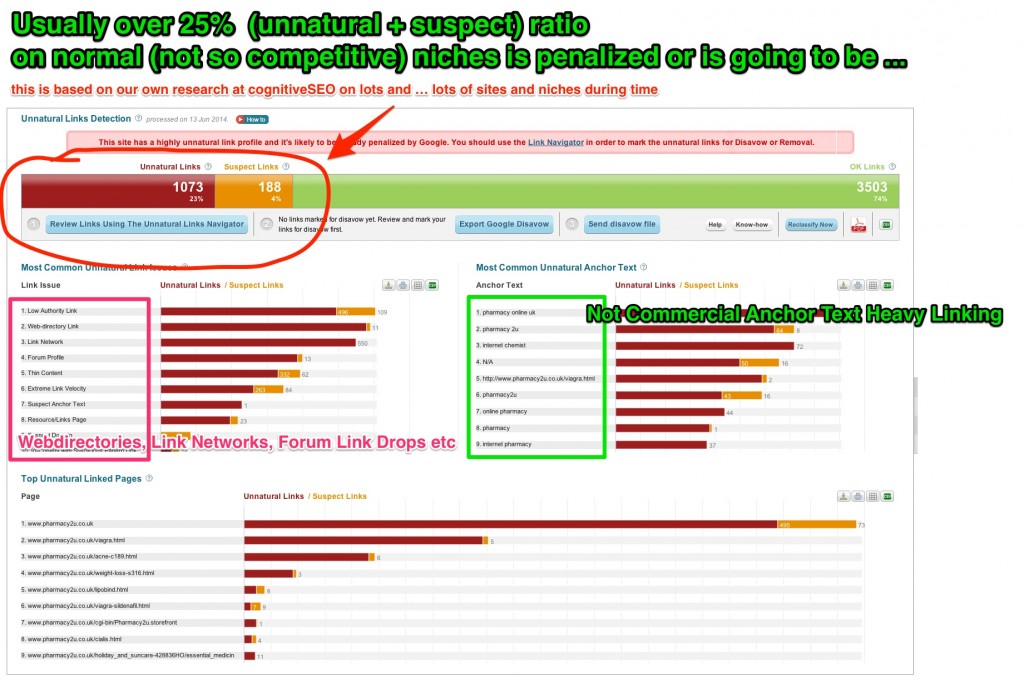
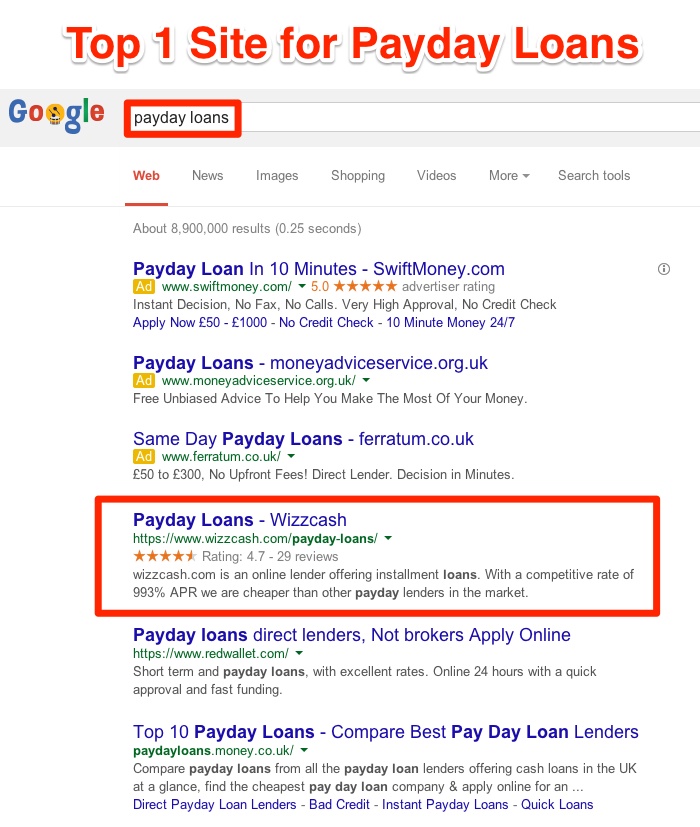
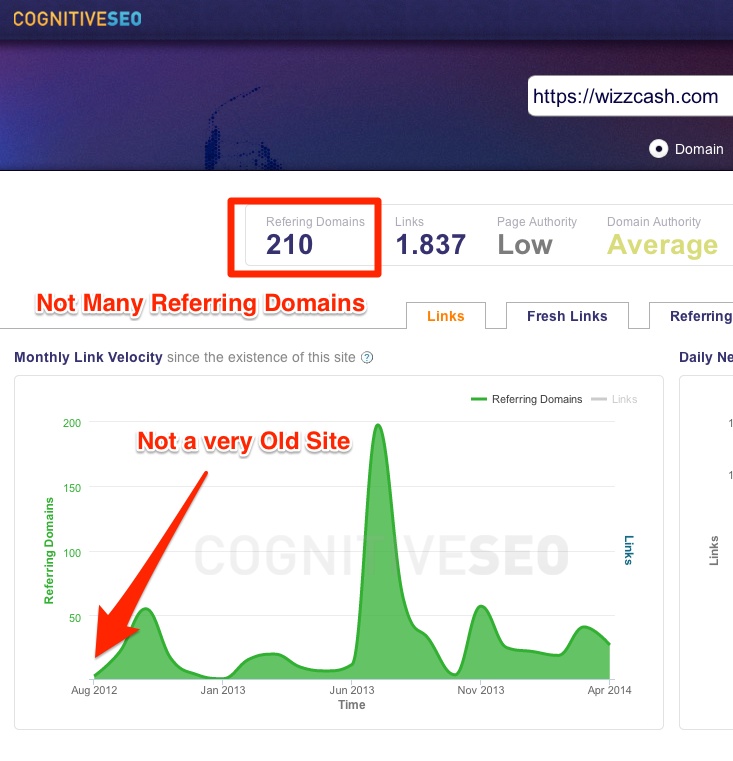


Hey Razvan,
Great post again.
Was just wondering if you had any active coupons/discounts of your plans?
Thank you.
Hi Dean,
We do not offer any coupon codes directly. The ROI you get at the current prices is great in terms of what you pay and what you achieve. 25 sites crawled on demand with 500 keywords tracked with unnatural link detection, social visibility, backlink explorer and more.
You should do the trial and check it out 😉
Cheers,
Razvan
Great post I have been working with a UK company in the “finance” niche and agree with most of what you are saying. We have been steady rise while just working the on page factors and cleanup… from 300+ to top of page 3. I think because these sites have such a hard time finding “legit linking opportunities” they tend to stray to far off topic not only are the internal links from “off topic” sites the content on their blogs is also often off topic. That is seemingly one of the footprints of the those caught in these filter/dampeners.
tks for the comment Terry. these industries are kind of “spam” saturated and probably Google has problems picking the less rotten apple from the basket of rotten apples. anyway it seems they did a better job with Pay Day Loans 2.0 and Pay Day Loans 3.0 in order to clear more of the junk.
they might not killed it completely for spammy queries but this is definitely how progress looks like…
Well written post in regard to payday loans and viagra, but the category I’m involved in “prom dresses” is still infested with spam. Designer dresses are a prime target for counterfeiters, and they spawn 100’s of new URL’s utilizing copyright infringing pages that make it into Google’s index daily. The focus of the spammers is to optimize on model #’s/styles, and they often obtain 1st page results and often dominate the second page.
that is a totally different technique that is used there probably. this update covers the techniques that were used for this kind of spammy keywords. Google does not detect automatically copyright infringement so this is a manual process.
Good to see those parasite domains getting squashed. I’ve seen an extensive amount of those in the casino niche, particularly in Australia.
any effect on those niches?
Hello,
As of today June 25, 2014. I have seen lots of spam result for all Viagra keywords including “Buy Viagra”.
See this screenshot – http://goo.gl/59ps38
Now I would like to correct your very first image, where wmtontheair.com is a site of theater, no way related to Viagra. It’s a case of black hat.
I work for pharma niche in UK market, And I am keeping a track of Google SERPs since very long. So I hope Google will take more action against spam.
Thanks
Stephen Oliver
indeed. it is not totally eradicated. but this is much better that it used to be. surely it will be better!
Hello Razvan,
I have raised this issue in Google Forum.
Have a look here – http://goo.gl/lJ0xmR
Thanks
Stephen Oliver
interesting to see how it develops
If the content is of good quality and the site meets the needs of the searcher, who really cares about the spamminess (is that a word) of the SEO techniques of a web site, ?
It seems to me that what Google is really doing is creating SERPs that are less accurate in an attempt to drive traffic to Adwords clicks. Which themselves have become less relevant.
Then they use Matt Cutts as a distraction, with the help of you and others like you. Look a squirrel.
Google recently took a manual action against one of my sites that has been running great fro years. This site was built around a key phrase. The key phrase is the name of the site and used in most of the titles and descriptions. It is a VERY accurate phrase to identify the site, the site contents and the goal of the site for the user.
The bounce rate on the site is less than 10%. The Google bounce rate for the paste 12 months was 5%. The page views and return rate is also very good.
This tells me my visitors are very happy, possibly ecstatic, with finding me on Google. Then Google decides the site is spammy and without taking more important variables into consideration, deletes my site from Google. (That is what a manual action is.) Only for it to be replaced with sites of much lower quality that do not meet the key phrase search requirements. In other words very low quality sites. Many of these sites that have moved up on my SERP are almost identical, full of the exact same ads and have no content of their own.
Google forums has a special place to explain why Google SERPs have decreased in quality
https://productforums.google.com/d/msg/websearch/f2sh29vW-ik/6ijQODsOw6UJ
After you view the Google forum above, please tell me what teamfortress wiki has to do with “engineer hats” or “engineer hat” and why it is on the SERP in the top 3 positions.
Spammy SEO was created by Google.
SEO was not created by Google. SEO existed since the moment the first search engine was invented. Spammy SEO was used and abused by people who wanted in that search engine.
Google did not manage to filter out the SPAM due to technical difficulties. It still has issues with it. But the process is much more advanced than it was 5 years ago.
It is rather hard for a person to say that a site is good for the visitor compared to the others when it does not have access to the others sites’ data.
Also Google is a company. If you want to rank in their search engine you need to play by their rules. Else you are free to do whatever you want with your site.
Yes Google does try to manipulate opinion but everyone is free to write and share whatever they consider right. Speaking in my name I am not militating for Google but I am milting for the people that want their site to be listed there. If this means following Google’s guidelines than that is it. If you want to have a business model where you rank a site for 1 days and have it de ranked forever and then do it again and again that you can do it. It is simply a different business model. But this business model does not apply to the majority.
my 2c
An interesting post after the payday loan update by Google to strip away spam queries. Thanks for sharing and keep posting informative stuff on this!